Red-Tailed Hawks are one of the most common birds of prey in North America, known for their distinctive calls, majestic aerial displays, and rusty-red tails.
They play an important role in the ecosystem as top predators and are often considered symbols of power, courage, and strength.
With their keen eyesight, remarkable hunting skills, and fascinating behavior, red-tailed hawks continue to captivate bird enthusiasts, wildlife enthusiasts, and scientists alike.
Identification
You can identify this species by its bulky and broad shape. It has 14 recognized subspecies, with their appearance varying from region to region. They can range from light auburn to deep brown in color.
In general, the underside of their body and wings are lighter than the rest of the body. Dark and intermediate morphs are more uniform in color whereas lighter morphs are more heavily streaked. Their legs and feet are yellow, and their tail is rust-colored.
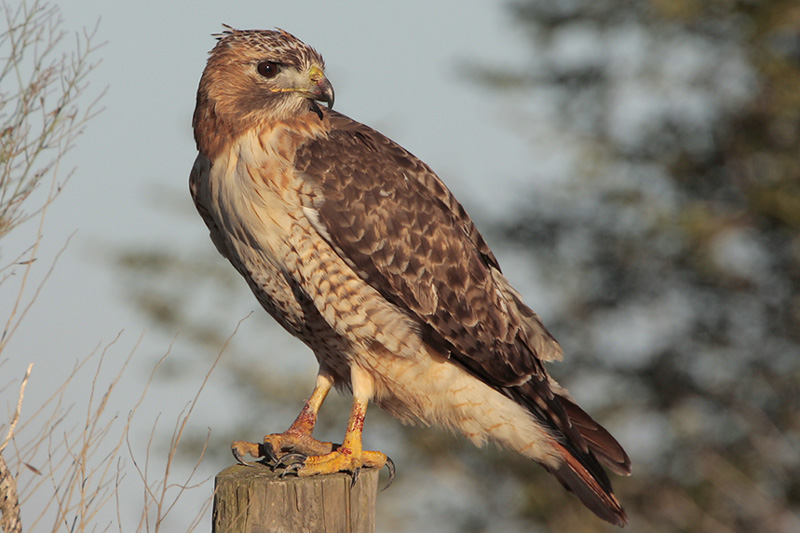
Red-tailed Hawk
The size of a Red-Tailed Hawk is the only way to differentiate between the male and female of the species, with the males being smaller and lighter.
They can grow to be 18-24 inches in length, have a wingspan of 3 feet 5 inches to 4 feet 8 inches, and weigh between 1.5-2.9 pounds.
Female Red-Tailed Hawks are bigger and 25% heavier than their male counterparts. They can grow up to 19-26 inches long, have a wingspan of up to 4 feet 10 inches, and weigh between 1.8-3.8 pounds.
Red-Tailed Hawks call can be described as a hoarse scream that lasts for 2-3 seconds. The phrase sounds like kee-eee-arr. It varies in length and pitch, depending on the age, gender, and region of the individual bird.
People often say that Red-Tailed Hawks sound like a steam whistle. During courtship, they can also make a shrill chwirk sound. The juvenile’s call sounds a bit similar to seagulls.
Food
Red-Tailed Hawks are carnivores, feeding on a variety of mammals, birds, and reptiles that their region offers.
Learn more: What do hawks eat? & Do hawks eat birds?
They perch on a higher spot that allows them to survey the area and look for small movements. When there are no suitable perches, they will soar in the air. Once they identify their prey, they leap from their perch, swoop down, and drop onto it, locking them in place with their sharp and long talons. They start eating right away, even though the prey might still be alive.
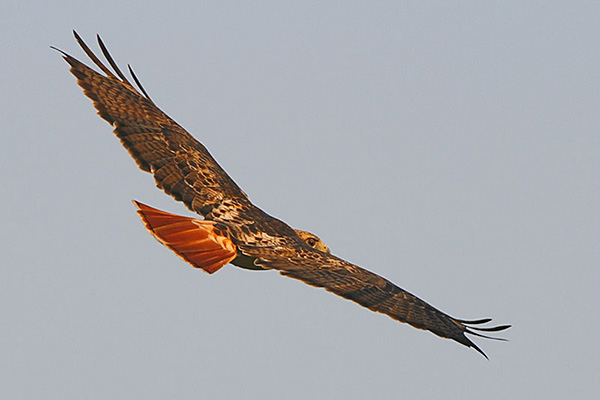
Since Red-Tailed Hawks have so many subspecies and inhabit so many regions, their diet is quite diverse, the weight of their prey ranging from an ounce up to five pounds. Depending on their location, their primary prey is what is most commonly available.
Overall, 80-85% of their diet is made up of small rodents but they eat anything from mice, rats, mice, rabbits, and squirrels to birds, fish, amphibians, and snakes.
In southern climates, they rely on lizards and reptiles, in tropical and island ecosystems they also eat fish, amphibians, and crabs. They can also come after domestic fowl. They are known to scavenge dead animals if needed, but this is a last resort, and they avoid it if possible.
Nesting and Eggs
Red-Tailed Hawks prefer to build their nests high up in the crown of the tree, which can be as high as 120 feet.
The nest tree is often taller than the surrounding ones, so they have a good overview of the surrounding areas. They may also build their nest on cliff ledges, arms of giant cacti, or on tall artificial structures, such as towers, window ledges, or billboard platforms.
The nest itself is a bulky bowl of sticks that is lined with softer and finer materials, including bark strips, dry plants, and fresh leafy green branches. The pair builds it together and it measures around 6.5 feet high and 3 feet across.
Here are some fast facts about Red-Tailed Hawk’s eggs.
- Clutch size can range from 1 to 5 eggs.
- Egg length ranges from 2.2 to 2.7 inches (5.5-6.8 centimeters).
- Egg width can range from 1.7 to 2.0 inches (4.3-5 centimeters).
- Egg color: white or light beige with creamy, brown, or purple blotches or speckles.
The female lays an egg every other day and then incubates them for 28 to 35 days. Although the incubation falls on the female alone, then the male helps by bringing her food. The nestlings fledge after around 44-48 days but stay with their parents for another 10-12 weeks.
Juvenile Red Tail Hawks also have light and dark morphs, but overall, they can be distinguished from adults by the fact that they are lighter and duller in color, smaller, and can be very heavily streaked both above and below.
Their tails are white to pale brown and have evenly spaced bars. You can also look at their eyes – they have yellowish eyes until they’re about 1.5 years old whereas the adults have red-brown eyes.
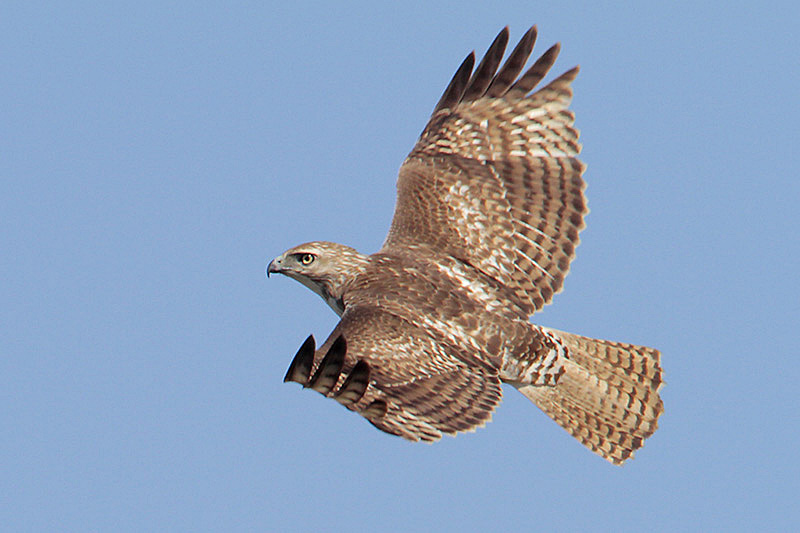
Juvenile Red-Tailed Hawk. Photograph © Greg Lavaty.
Current Situation
Red-Tailed Hawks range from Alaska and Canada into Mexico and very northern Central America. They are mostly year-round residents or migrate short distances. Birds from Alaska and Canada fly south for the winter, but otherwise, they stay put.
Red-Tailed Hawks prefer open areas with scattered high places to perch on. They can be seen in different habitats and over a wide range of altitudes. You can meet them in scrub deserts, plains, grasslands, and fields, but also in patchy forests, rainforests, and even urban parks.
The IUCN Red List has listed this species as of low concern. Its population size has increased and it has spread its range, most likely due to the increasing amount of open areas and patchy woodlands.
There are no natural predators for these birds, except for that Great Horned Owls and Crows eat their nestlings and eggs. The greatest threats are collisions with vehicles, shootings, and disrupting nesting activities.
Facts
- Red-Tailed Hawk’s feathers symbolize positive energy and regeneration. The birds are a symbol of power, courage, determination, and strength.
- Hollywood often uses a Red-Tailed Hawk’s cry whenever a hawk or an eagle appears on screen, no matter the species.
- Red-Tailed Hawk’s eyesight is 8 times better than that of a human. They have a third eyelid to keep their eyes clean.
- During courtship, Red-Tailed Hawks put on a mighty display, soaring in wide circles at great heights. The male dives steeply and shoots up again. He can also toss prey to the female midair.
- The pair can be seen locking talons and diving toward the ground in spirals before letting go and pulling up again.
Similar Species
There are three similar species to Red-Tailed Hawks with the most similar ones being the Red-Shouldered Hawk and the dark morph of Swainson’s Hawk. Worry not, there are ways to distinguish them.
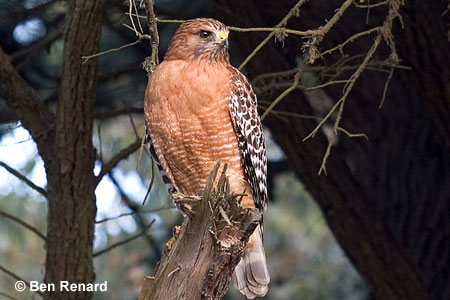
Red-Shouldered Hawk
Red-Shouldered Hawk – Red-Shouldered Hawks are smaller and have a banded tail, whereas Red-Tailed Hawks have an unbanded tail.
Learn more: Red-tailed Hawk vs Red-shouldered Hawk
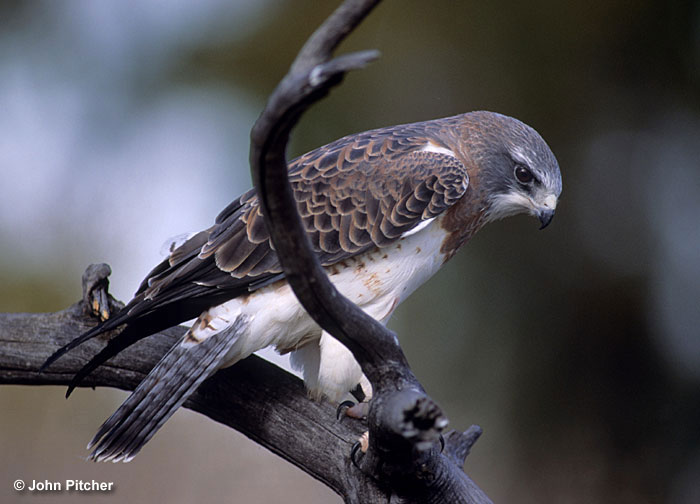
Swainson’s Hawk
Swainson’s Hawk – Swainson’s Hawk’s light and dark morphs have similarities to Red-Tailed Hawks.
The light morphs, however, appear mostly black and white. The light morph has a whitish underside and dark feathers and a tail barred with white and black.
The dark morph is more similar to Red Hawks, but their flight feathers are darker than that of Red-Tailed Hawks’.
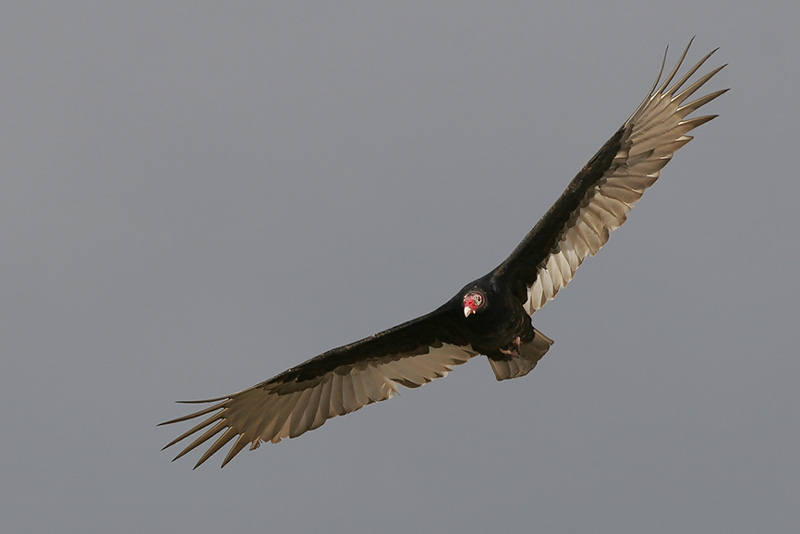
Turkey Vulture
Turkey Vulture – Northern Turkey Vulture might be mistaken for our beloved Red-Tailed Hawk, however, the vulture has longer and more rectangular wings and is uniformly colored.
They are also less steady when they soar.
Overall size is another big difference as well – turkey vultures are much bigger than Red-Tailed Hawks and have much greater wingspan.
FAQ
How rare is a Red-Tailed Hawk?
Red-Tailed Hawks are common across all of North America, especially in open areas with high spots to perch on.
Are Red-Tailed Hawks aggressive?
During the breeding season, Red-Tailed Hawks are aggressive and territorial, attacking anyone, including humans, who pose a threat to their nest and younglings.
Can a hawk hurt a human?
Hawks rarely attack humans, but they may attack if they feel threatened or when they are protecting their young.
What time of day are hawks most active?
Hawks are active throughout the day, although they prefer to hunt in the early morning and late afternoon.
How big is a Red-Tailed Hawk?
Red-Tailed Hawks measure 18-26 inches long, have a wingspan of 3 feet 5 inches to 4 feet 8 inches, and weigh between 1.5-3.8 pounds. The females are bigger and heavier than the males.
Do Red-Tailed Hawks migrate?
Red-Tailed Hawks don’t generally migrate and can be seen year-round. During winter, the birds from Alaska and Canada migrate southward. They can also migrate when food has become scarce.

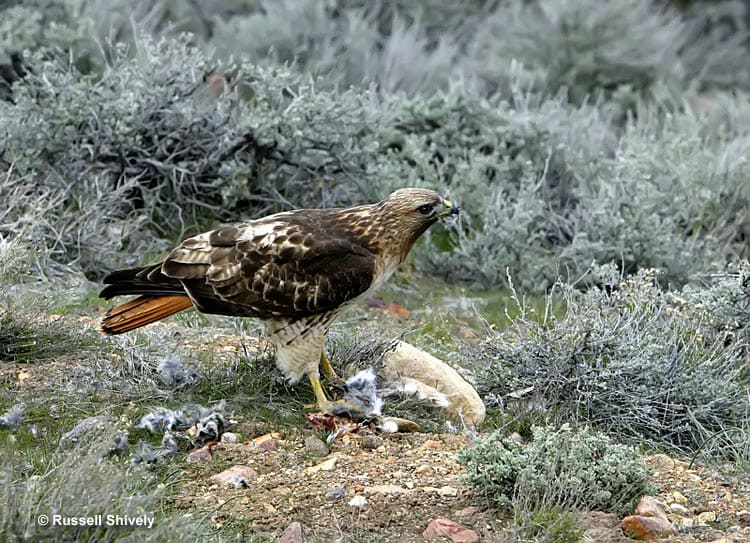
G sythe
Wednesday 1st of November 2023
Thank you for the info.